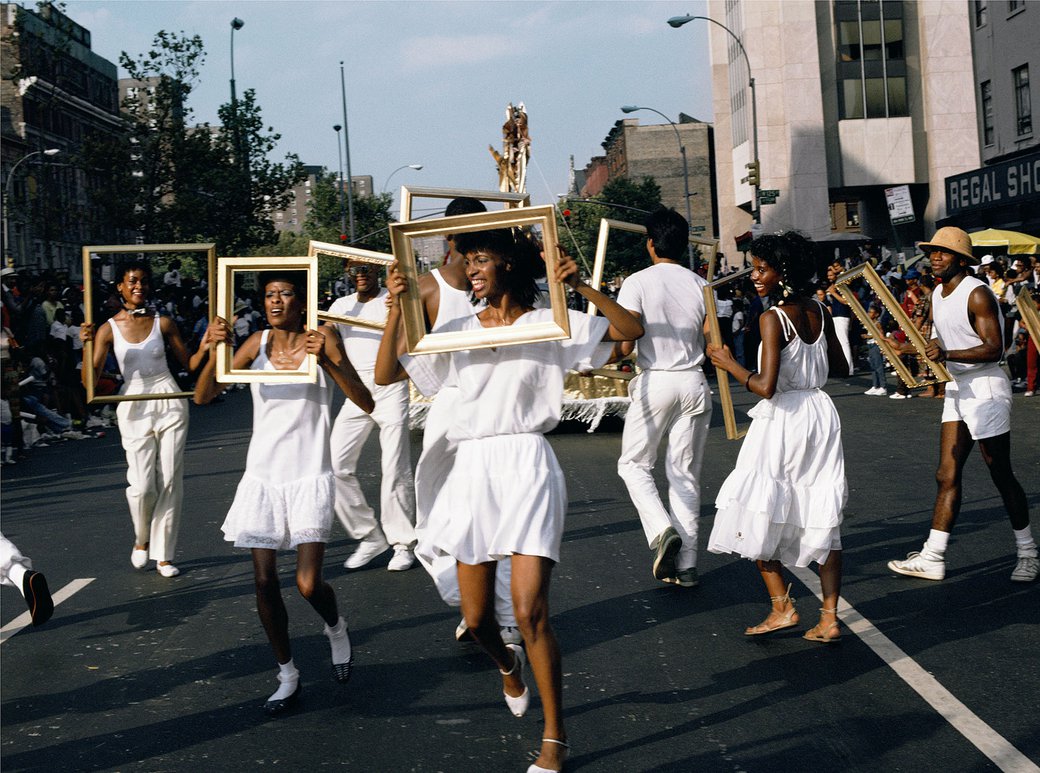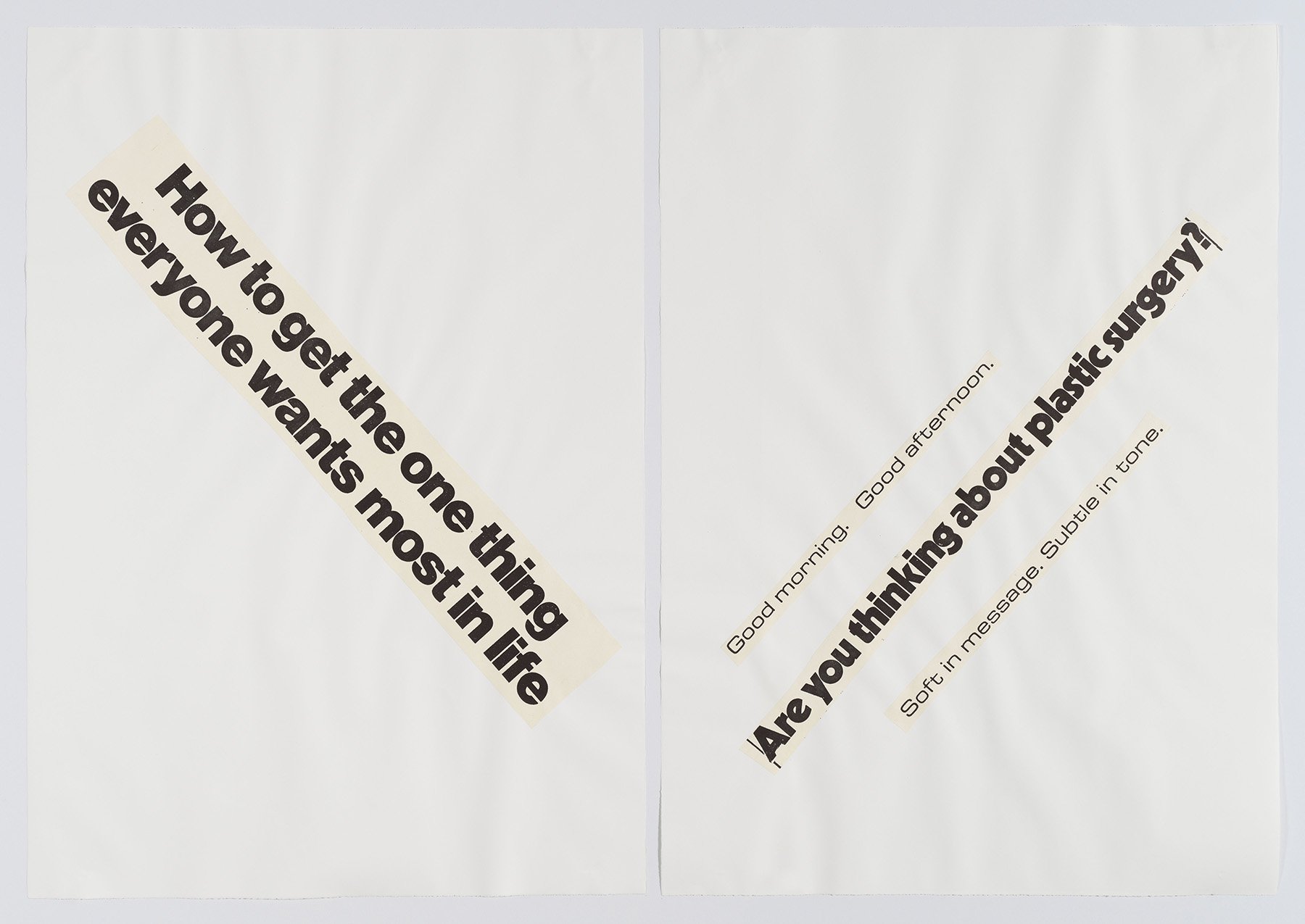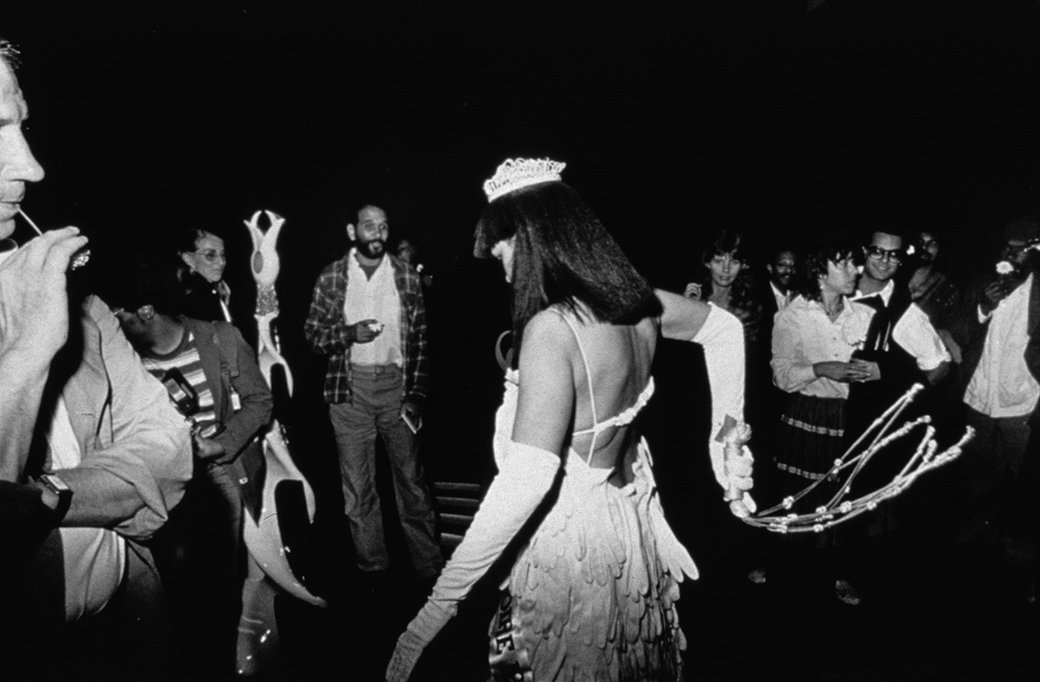Wattis Institute’s 2021–2022 research season is inspired by the work of Lorraine O’Grady
The yearlong research season, Lorraine O’Grady is on our mind, uses the work of artist Lorraine O'Grady as a lens to think about our contemporary moment through a series of public lectures, screenings, performances, and other events.

Lorraine O’Grady, Art Is...(Troupe Front), 1983/2009. C-print in 40 parts, 16 x 20 in (40.64 x 50.8 cm). Edition of 8 + 1 AP. Courtesy the artist and Alexander Gray Associates, New York. © 2021 Lorraine O’Grady / Artists Rights Society (ARS), New York.
San Francisco, CA—September 21, 2021—Artist Lorraine O’Grady is the subject of the Wattis Institute for Contemporary Arts’ 2021–2022 research season, Lorraine O’Grady is on our mind.
Throughout the year-long research season, which runs from September 2021 through July 2022, the Wattis will use O’Grady’s work as a point of departure—exploring various questions and themes connecting other artists and ideas to O’Grady’s work—for a series of public lectures, performances, screenings, and other events featuring prominent artists and thinkers.
Those events begin Tuesday, September 21, with a free online lecture by Catherine Morris, Sackler senior curator at the Brooklyn Museum. With Aruna D’Souza, Morris is curator of O’Grady’s Both/And, the artist’s first monographic exhibition which was on view at the Brooklyn Museum from March through July 2021. Beginning with her intersectional engagement with art world feminism in the early 1980s, the lecture is structured around a discussion of O’Grady’s critical interventions into the western art historical canon, culminating in her most recent project Announcement of a New Persona (Performances to Come!).

Lorraine O’Grady, Rivers, First Draft: A Little Girl with Pink Sash memorizes her Latin lesson, 1982/2015. Digital C-print from Kodachrome 35mm slides in 48 parts, 16 x 20 in (40.64 x 50.8 cm). Edition of 8 + 2 AP. Courtesy the artist and Alexander Gray Associates, New York. © 2021 Lorraine O’Grady / Artists Rights Society (ARS), New York.
Additional events—including a November 18 lecture by Franklin Sirmans on the influence of the New York gallery Just Above Midtown (1974–1986) and its founder Linda Goode Bryant; virtual musical performances reflecting on Lorraine O’Grady’s work as a music collaborator and critic for The Village Voice and Rolling Stone (1960–1970s); and a conversation between Lorraine O’Grady and artist Sam Vernon in February 2021—will be announced on the newly redesigned wattis.org.
Running alongside but separate from the Wattis Institute’s exhibition programming, each of the Wattis’ year-long research “seasons” creates a community around a broad set of themes and subjects as they relate to the work of a single artist. Lorraine O’Grady is on our mind is Wattis Institute’s eighth research season; past seasons featured Joan Jonas (2014–2015), Andrea Fraser (2015–2016), David Hammons (2016–2017), Seth Price (2017–2018), Dodie Bellamy (2018–2019), Trinh T. Minh-ha (2019–2020), and Cecilia Vicuña (2020–2021).
At the culmination of this year’s research season, the Wattis will release two publications: a book conceived with O’Grady and the fourth issue of the Wattis’ new annual reader, A Series of Open Questions.
Lorraine O’Grady is on our mind is co-curated by Jeanne Gerrity and Kim Nguyen. Special thanks to Lorraine O’Grady, Ursula Davila, and Page Benkowski. The CCA faculty group who collaborated on this research includes Kota Ezawa, Jeanne Finley, Jacqueline Francis, Jeanne Gerrity, Becca Imrich, Michelle Murillo, Kim Nguyen, Peter Simensky, Sam Vernon, Leila Weefur, and Allison Yasukawa, with assistance by Zalika Azim and Selam Bekele.

Lorraine O’Grady, Cutting Out CONYT 02, 1977/2017. Letterpress printing on Japanese paper, cut-out, collage on laid paper, Diptych: 41 3/4 x 60 in overall, 41 3/4 x 30 in each (106 x 152.4 cm overall, 106 x 76.2 cm each). Edition of 12 + 1 AP. Courtesy the artist andAlexander Gray Associates, New York. © 2021 Lorraine O’Grady / Artists Rights Society (ARS), New York.

Lorraine O’Grady, “Crowd Watches Mlle Bourgeoise Noire Shouting her Poem,” from Untitled (Mlle Bourgeoise Noire) 1980-83/2009. Silver gelatin fiber print, part 11 of 14, 8.13 x 10.62 in (20.65 x 26.97 cm). Edition of 20 + 2 AP. Courtesy the artist and Alexander Gray Associates, New York. © 2021 Lorraine O’Grady / Artists Rights Society (ARS), New York
About Lorraine O’Grady
Lorraine O’Grady (b.1934) combines strategies related to humanist studies on gender, the politics of diaspora and identity, and reflections on aesthetics by using a variety of mediums that include performance, photo installation, moving media, and photomontage. A native of Boston, MA, her work involves her heritage as a New Englander, and daughter of Caribbean immigrant parents. After she graduated from Wellesley College in 1956 studying economics and Spanish literature, she served as an intelligence analyst for the United States government, a literary and commercial translator, and rock music critic. Turning to visual arts in the late 1970s, O’Grady became an active voice within the alternative New York art world of the time. In addition to addressing feminist concerns, her work tackled cultural perspectives that had been underrepresented during the feminist movements of the early 1970s.
In the 1980s, O’Grady created two of her most currently recognized bodies of work, Mlle Bourgeoise Noire (1980–83), a guerrilla performance taking place in the heart of New York City’s downtown art scene, and Art Is... (1983), a joyful performance in Harlem’s African-American Day Parade. In Mlle Bourgeoise Noire, O’Grady’s extravagant persona responded to the Futurist dictum that art has the power to change the world and was in part a critique of the racial apartheid still prevailing in the mainstream art world.
Concerned with the lack of African-American and other representation in the Feminist movement of the 1970s, O’Grady critiqued the effort’s inability to “make itself meaningful to working-class white women and to non-white women of all classes.” O’Grady has continued an ongoing commitment to articulating “hybrid” subjective positions that span a range of races, classes, and social identities. In addition to her work as a visual artist, she has also made innovative contributions to cultural criticism with her writings, including the now-canonical article, “Olympia's Maid: Reclaiming Black Female Subjectivity.”

Lorraine O’Grady, Miscegenated Family Album (Ceremonial Occasions II), L: Devonia attending a wedding; R: Nefertiti performing an Aten ritual, 1980/1994. Cibachrome prints, 20 x 16 in each (50.8 x 40.6 cm each). Edition of 8 + 1 AP. Courtesy the artist and Alexander Gray Associates, New York. © 2021 Lorraine O’Grady / Artists Rights Society (ARS), New York.
Lorraine O’Grady’s work has been the subject of numerous one-person exhibitions, and Brooklyn Museum organized a retrospective of her work, Lorraine O’Grady: Both/And, that opened in the spring of 2021. Other solo shows include From Me to Them to Me Again, Savannah College of Art and Design (SCAD) Museum of Art, GA (2018); Family Gained, Museum of Fine Arts (MFA), Boston, MA (2018); Lorraine O’Grady: Initial Recognition, Centro Andaluz de Arte Contemporáneo, Monastery de Santa María de las Cuevas, Seville, Spain (2016); and Lorraine O’Grady: When Margins Become Centers, Carpenter Center for the Visual Arts, Harvard University, Cambridge, MA (2015).
Her work has been included in countless group exhibitions, including Soul of a Nation: Art in the Age of Black Power, Tate Modern, London, United Kingdom (2017), traveled to Crystal Bridges Museum of American Art, Bentonville, AK (2018), Brooklyn Museum, NY (2018), The Broad, Los Angeles, CA (2019), de Young Museum, Fine Arts Museums of San Francisco, CA (2019), and The Museum of Fine Arts, Houston, TX (2020); and We Wanted a Revolution: Black Radical Women 1965—85, Brooklyn Museum, NY (2017), traveled to California African American Museum, Los Angeles, CA (2017), Albright-Knox Art Gallery, Buffalo, NY (2018), and Institute of Contemporary Art, Boston, MA (2018).
Her work is represented in innumerable public collections, including the Art Institute of Chicago, IL; Brooklyn Museum, NY; Carnegie Museum of Art, Pittsburgh, PA; Los Angeles County Museum of Art, CA; Museum of Fine Arts, Boston, MA; The Museum of Modern Art, New York; and Walker Art Center, Minneapolis, MN. She has been a resident artist at Artpace San Antonio, TX, and has received numerous other awards, including a 2015 Creative Capital Award in Visual Art, a Creative Capital Grant, the CAA Distinguished Feminist Award, a Life Time Achievement Award from Howard University, an Art Matters grant, and the Anonymous Was A Woman award, as well as being named a United States Artists Rockefeller Fellow. Most recently, she was honored with a Skowhegan Medal (2019) and the Francis J. Greenburger award (2017). In addition to her work as a visual artist, she has also made innovative contributions to cultural criticism with her writings. A book of her collected writings, Lorraine O’Grady: Writing in Space, was published by Duke University Press in fall 2020.